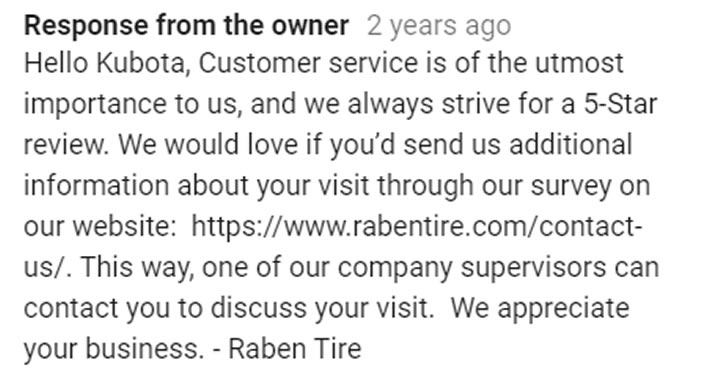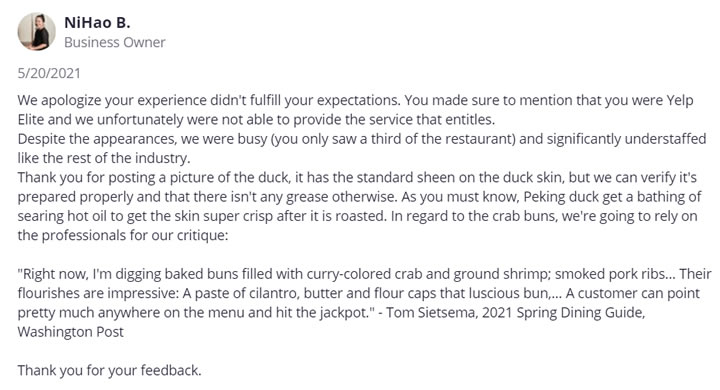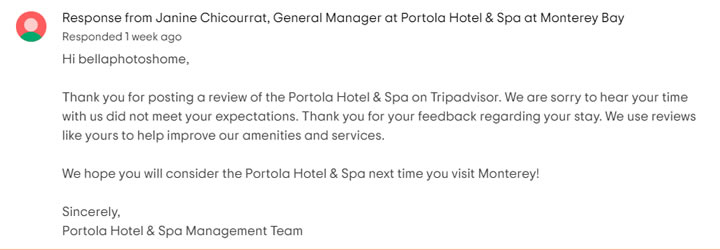Rules for defending one’s positions: for business owners, public figures, or anyone presenting services on the Internet.
Before visiting a restaurant or making a request to a building company, you probably read internet reviews. As a survey from Qualtrics demonstrates, that’s what 97% of consumers do. It’s also true that our attention first goes to negative reviews. Sometimes a couple of negative comments can outweigh a hundred positive ones.
Now imagine that your business has received a negative review. And even worse: it’s all true. If this happens, there is no need to panic — that’s what Arsenii Katkov, the CEO of Reputation America, firmly believes. He is ready to share some tips on how to handle negative feedback and keep the situation under control.
Whose Example to Follow?
One of my good acquaintances is working in the Valley. Sometimes I ask for his opinion on business ideas, and the answer I always get is: “Just see how Tesla does it.” It applies here as well.
From an investigative piece by Business Insider, we learned that Tesla Energy has a special team that finds complaints about the company and makes arrangements to delete them.
It happens in a very civilized way: the team asks about the source of the problems, resolves them, and only then asks to delete the negative feedback. In my opinion, that’s the kind of approach every business should pursue.
How to deal with negative criticism? As statistics from Bazaarvoice show, the key here is the dialog.
- A public answer to a negative comment made users view the product card 23% longer;
- 34% of online shop users head straight to the customer review section and only after that — to the product description;
- 24% of product cards containing responses from the company received higher evaluations.
Negative reviews always have a history: delivery to a wrong address, a missed deadline, rude words… At some point, a mistake happens, so the next step is determining how to handle negative feedback. When it is corrected, no reason is left for the negative review to exist.
Step 1. Define the Real Problem
A response to the review has two targets: a dissatisfied client and third-party readers. Even if you don’t succeed in deleting the review, you will show that you are keeping track of opinions on your product and care about your clients. And that in itself can be good for your reputation.
Another point here is the gist of the described problem. Some of them can be resolved in a few hours, like finding out the reason for an unexpected money withdrawal or sending a specialist to re-do their work. In some situations, it will be harder to make up for your fault. So, the logic of the review response depends on whether the problem can be resolved.
To understand how to deal with negative feedback, it’s essential to look at the situation from each party’s perspective. It’s also important to talk to company workers and find out what happened before contacting the author of the negative review.
Another consideration about how to handle negative feedback: the words of a company’s representative will be regarded as the tone of voice of the whole brand. It may be unfair, but so it happens. That’s why it’s better to have negative feedback processed by an expert who isn’t emotionally involved in the problem.
Step 2. Establish Contact With the Author
Let’s look at the situation from the point of view of a dissatisfied client. They may be angry and unable to control their emotions, and it is normal. However, the company representative does not have a right to be like that. Being human-oriented in business implies hearing and understanding others, and these are the attitudes to display.
To deliver your message in a constructive tone, stick to the following algorithm: polite greeting + gratitude
Polite greeting. Businesses keep situations under control, and the best way to show it is to stay polite. Of course, the response is given by a person, but it will be projected onto the whole company. Meaning, there is a need to demonstrate high standards of communication from the very beginning.
It’s better to address the author by their profile name, except in cases where it’s explicitly a joke name.

Gratitude. A person left a negative review because they wanted to be heard. So it is reasonable to show the client that their words changed something, or at least were regarded as worthy of attention.
Not all negative reviews are based on a problem. Maybe the author just has some remarks about the way the business works. In such cases, it is good to thank a client for their review and take their offers into consideration. The ultimate goal here is to show attention.
How to handle negative feedback: the thing which causes the most harm is not the negative reviews themselves but the company’s silence. That’s why it’s necessary to respond to an author, starting with a polite greeting.
Step 3. Analyze the Situation
Apologies are needed in two cases: when the business committed a significant fault or when the problem described in the review is impossible to resolve. For example, the client is upset by the state of the hotel room, but they’ve already left. They couldn’t care less about the promo codes.
The problem can be resolved operatively. The equipment can be reinstalled, nor can access to the service be given back. In such cases, the scenario goes as follows:
- Constructively answer all the described problems.
- Mention the company’s strengths and explain the scenario. Show the author that the bad side of the business they faced isn’t the norm.
- Tell how the client’s problem will be resolved. This is exactly the part people are usually interested in, so it’s essential to make it precise and clear.

The problem can be solved, but not at once. Finding a new employee or waiting for a new piece of equipment to be delivered requires time. Show the client that their voice is heard and the problem will be resolved in the foreseeable future.
After the constructive answer to the complaint, explain that the company will be changing for the better thanks to the client’s commentary. Express gratitude for the feedback once more.
After some time, it’s highly desirable to write about how the situation has been resolved. Add this information to the response or create a new one.
The problem is impossible to solve. Sometimes power cuts happen, and sometimes delivery agents bring defective pieces of equipment. But the client doesn’t care if the service is already provided, and it cannot be provided anew.
Here, it is necessary to apologize and say that your company had taken corresponding measures. Every effort has been made to prevent such situations from happening again.
How to handle negative feedback: the client needs either apologies or changes. Don’t be afraid to listen and change for the better.
Step 4. Underpin the Results
Finish the conversation politely. It’s essential that the last lines of the response be in a positive tone. Whatever happens, the company is sure it ends well.

The perfect fit here will be to mention the information about the discounts and special offers to stimulate the following requests (other users are also reading the answer, aren’t they?).
The alternative strategy would be to respond shortly and move the conversation offline. For example, ask to reach out to the company or leave a contact number.
How to handle negative feedback: After reading your response, the upset client should understand that they have been heard and measures have been taken.
Dealing with Negative Feedback
In most cases, the following response scenario works fine:
- Greet the client politely
- Thank them for the review
- If needed, apologize for mistakes
- Comment on the problem
- Explain how the problem can be solved
- Mention the company’s strengths — use the positive side
- End the conversation politely
By the way, you can find some specific examples and answer templates here.
Remember a client who ”came back” is more sensitive about the company’s new mistakes. What’s more, you cannot bring a client back twice.

